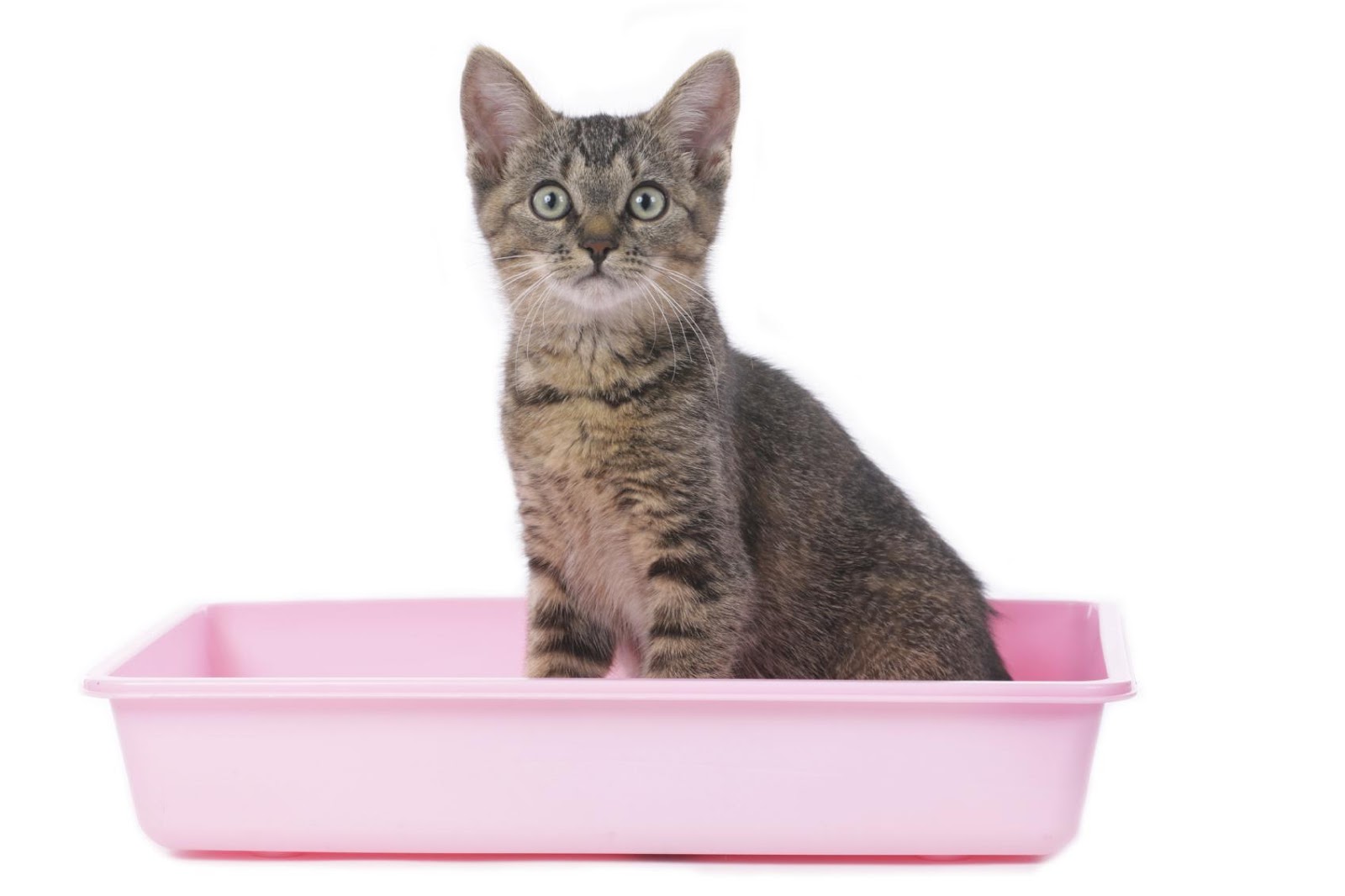Every owner of a fluffy lump faces the question: how to litter train a cat? Cats are known for being extremely clean animals. To avoid any unwanted surprises, it’s best to start litter training early. Breeders suggest starting the training for cats older than three months, by which time they have usually developed their behavioral patterns. Kittens typically learn from their mother and start using the litter box on their own. However, if you have a kitten that is around 1.5 months old and hasn’t been trained, don’t worry, as this is actually the perfect time to teach them. We’ve gathered some reliable information and are here to share tips to help you successfully navigate this process.
Choosing a Tray
Nowadays, pet stores offer a wide range of trays in different shapes and colors. The most common models are open and closed trays.
Open trays
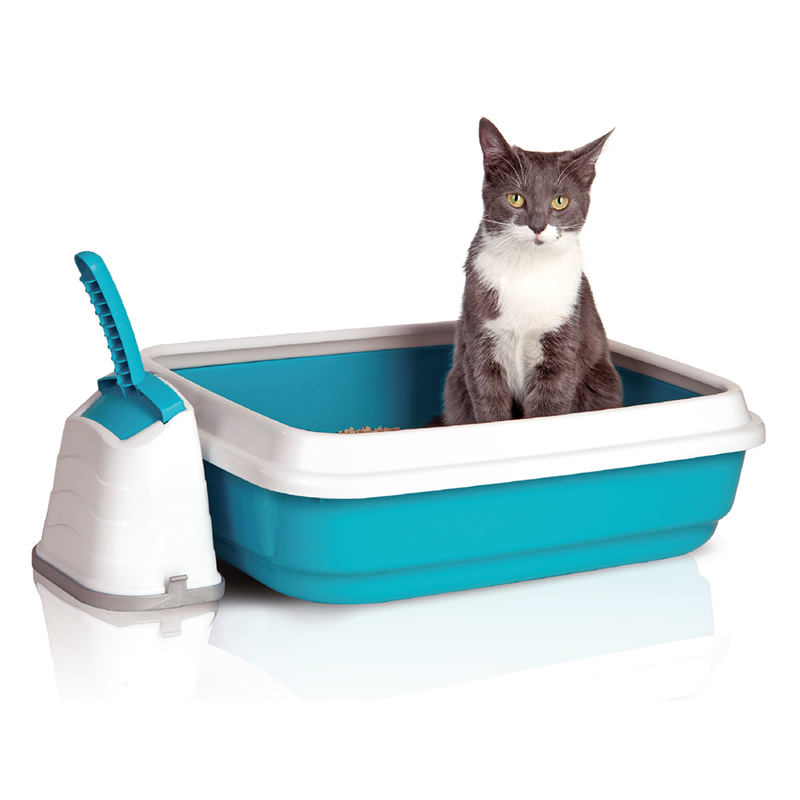
Advantages:
- Low price
- Allows for easy change of filling
Disadvantages:
- Doesn’t hold odors well
A net complements the open plastic tray.
The net is placed on top of the base into which the filler is placed. It allows you to do without filler, or if filler is used, the net prevents the filler from spreading around the house.
If you choose an open tray, we suggest you pay attention to its size and the height of the sides. Choose the “for growth.” When your kitten gets older, you won’t have to run to the pet store for another litter box, and the high sides will save you from dirt around the litter box.
Closed trays
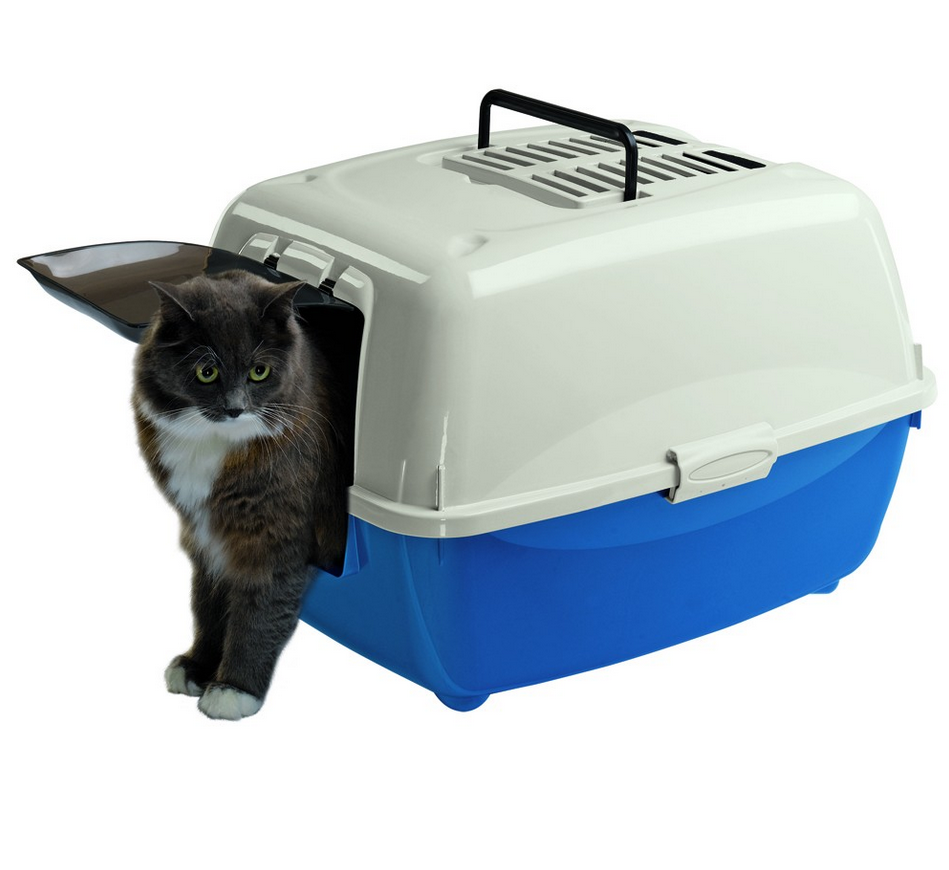
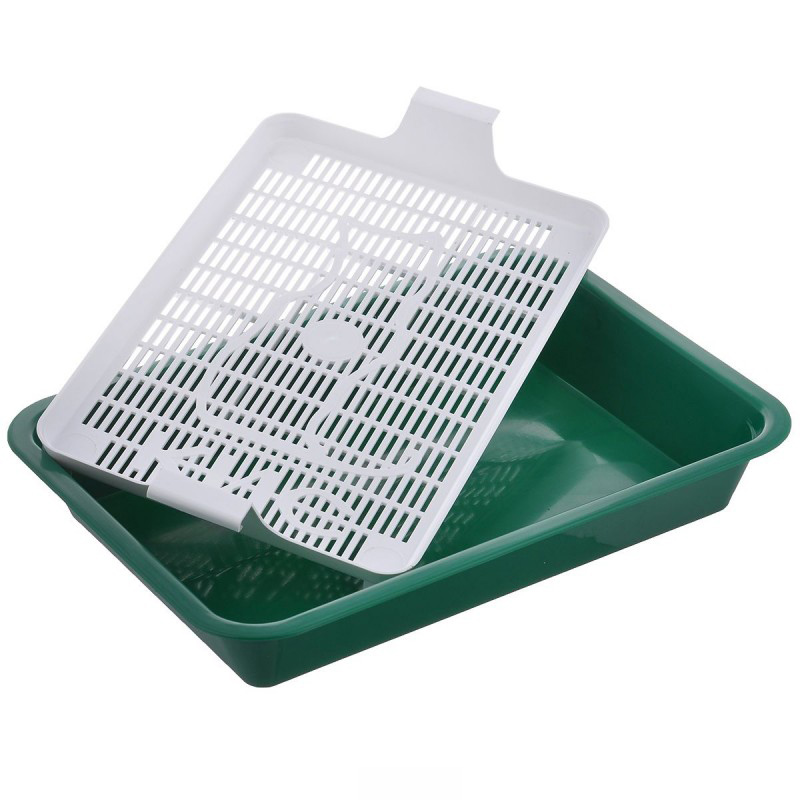
The tray house

Advantages:
- Good at keeping lousy odor at bay
- Helps keep the area around the toilet clean
Disadvantages:
- Price
Closed litter trays often have a door, which may appeal to only some pets. If you already have a regular litter box, try making and fixing a roof on it out of ordinary cardboard or create holes in a box and put it on top of the main litter box. See how your pet behaves.
The latest invention in the indoor cat toilet category is self-cleaning (automatic) litter boxes.
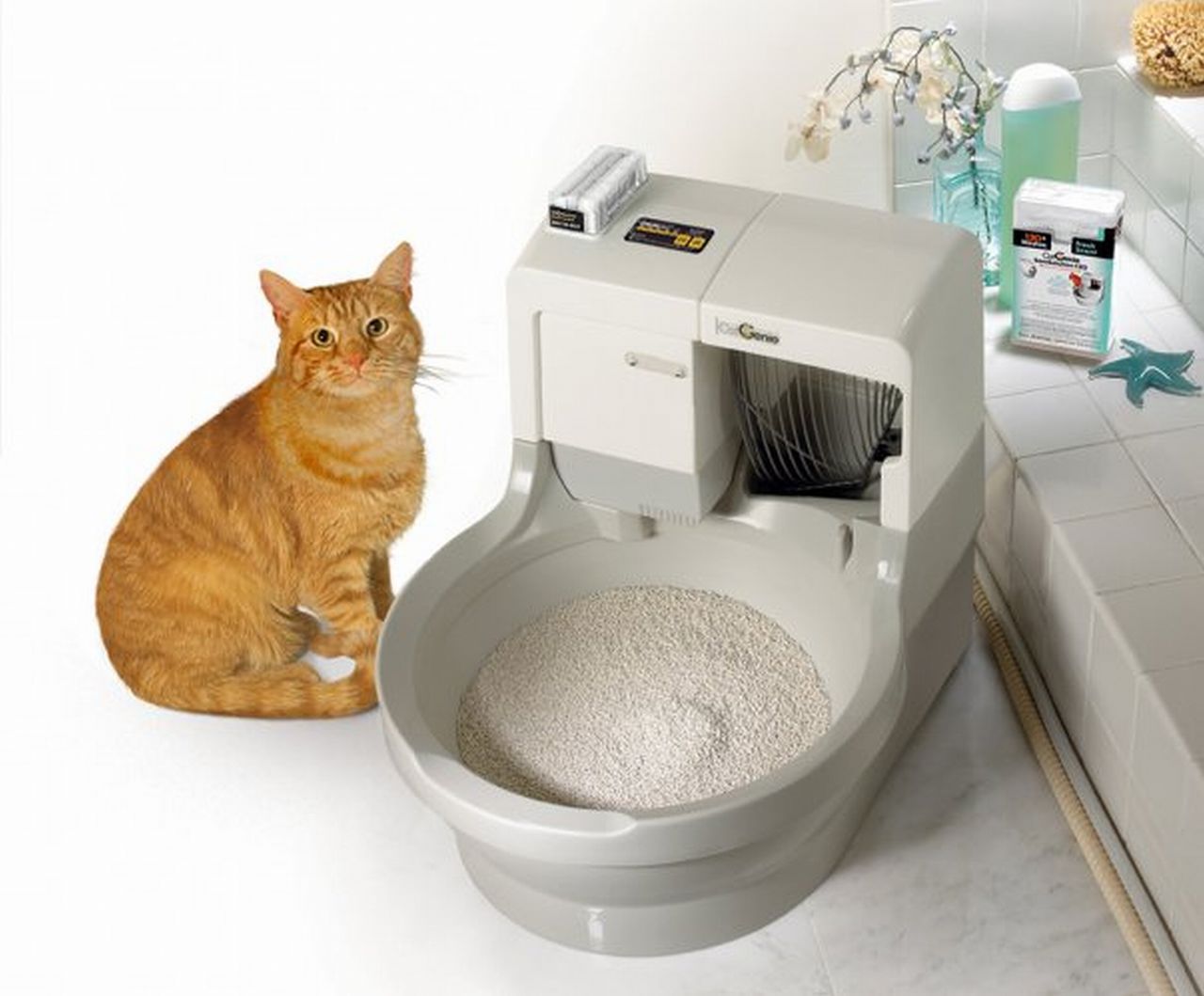
This option is suitable for owners who have several pets in the house or do not have the opportunity to clean up after the animal frequently. Automatic self-cleaning litter trays are connected to the sewage system and the power grid. They operate on the principle of recycling waste, which is subsequently washed away with a unique solution. It is safe for the animal because the solution is in a special compartment, and special sensors allow it to control the pet’s absence in the litter box and to clean it in its absence. After processing, the litter tray is dried with hot air for disinfection. Such a miracle technology does not cause problems for the owner and the pet and is also characterized by high hygiene.
Choosing the Filler
Today, pet stores offer a wide range of different fillers. The choice depends only on the preferences of the owner and the pet, as each type successfully copes with its task. Let’s consider some of them.
Paper and cereal
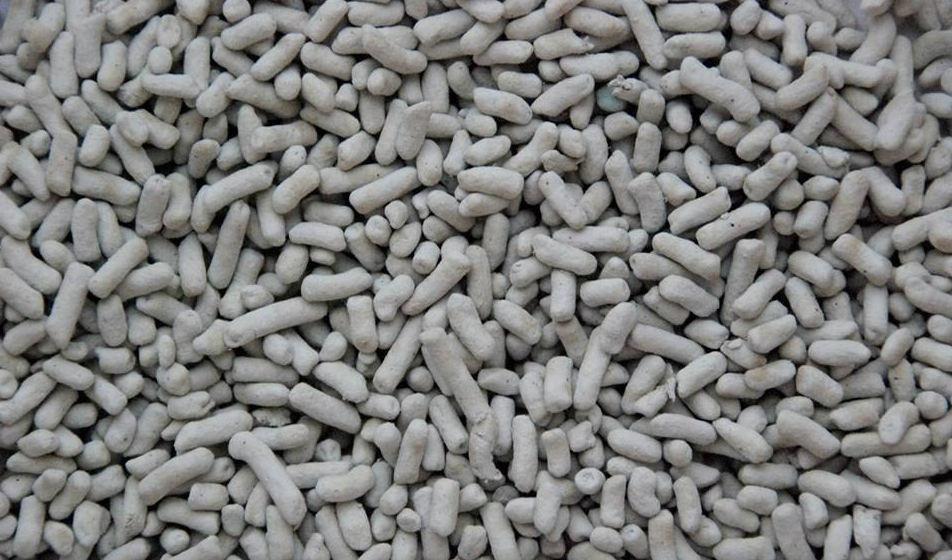
Grain fillers have several good properties but are most often used for rodents. Their porous structure reliably absorbs moisture and odor, thus ensuring long-term use. On the other hand, paper fillings have only moisture-absorbing properties and require more frequent changes.
Wood filler
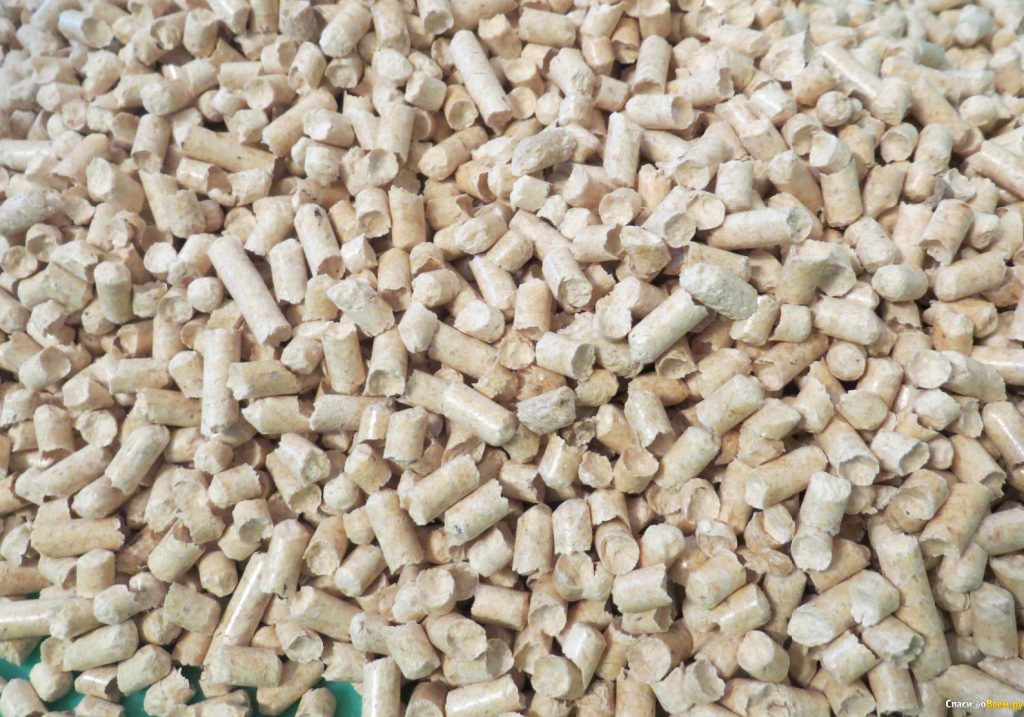
Wood filler is a compressed pellet of sawdust. It is an all-natural component with sound absorption properties. It should be changed once every 2-3 days. Please note that wood fillers differ in size—for babies, it is better to take smaller pellets.
Clay filler
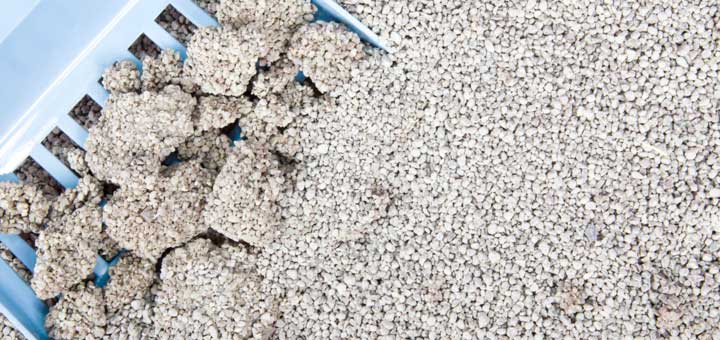
When wet, lumps are formed, which can be easily removed. But often, such filler clings to the claws, and subsequently, it turns out to be scattered all over the house. A low price characterizes it.
Mineral
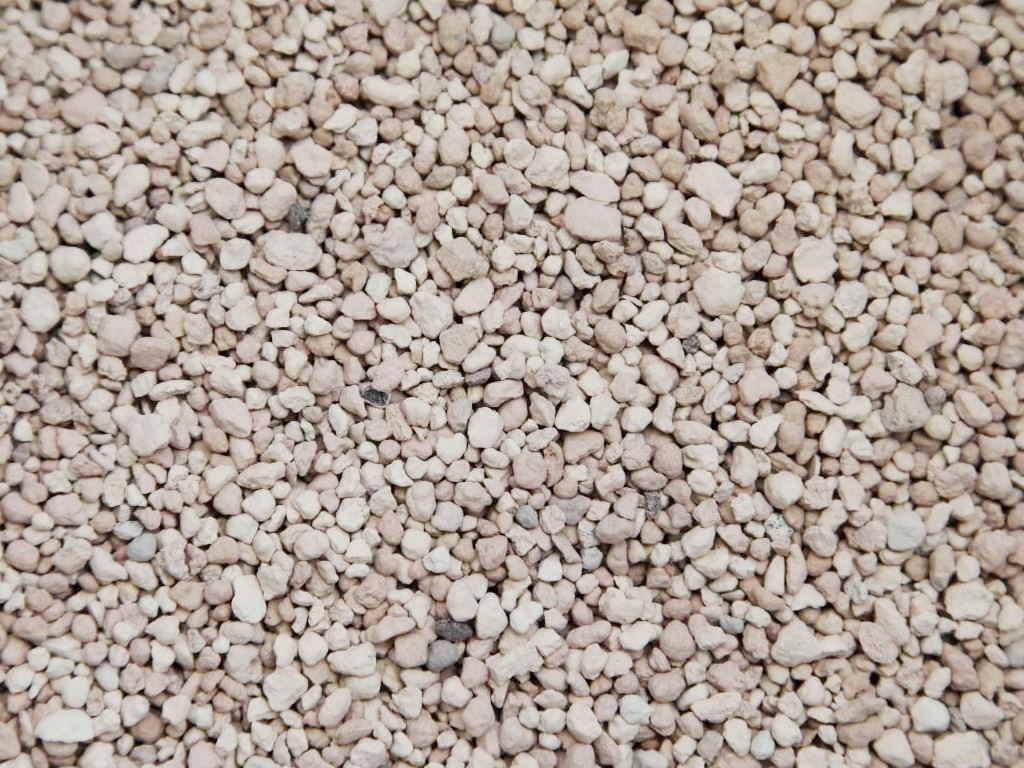
This type of filler is made of volcanic material. In contact with the liquid, it darkens and absorbs moisture, and the mineral layer unsuitable for further use should be removed once every 1-2 days. In addition, it maximally replicates the animal’s natural ideas about the toilet.
Silica gel
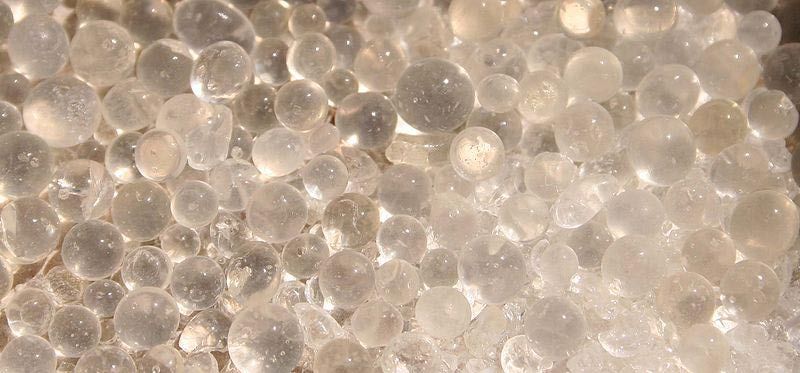
This filler retains odor well and does not need to be changed frequently (it can be changed 1-2 times a month). The filler’s color change indicates that the owner can see if the granules are complete and replace them. Silica gel is a safe and environmentally friendly material where bacteria and mold do not appear.
!Please note: these pellets must not be flushed down the drain
General tips:
- You must be patient when training a kitten to the litter box. Most likely, the kitten will not remember its place from the first time. It would be best if you bought furniture cleaners in advance to remove stains and odors. If the stain is gone but the odor remains, the kitten may mistake this place for a toilet and go there every time.
- Do not scold your pet if he goes to the toilet in the wrong place again. This can cause stress to the animal, and it will then try to go to areas hidden from your eyes. Instead, move the pile to the litter box, take the kitten, and leave it there for a while.
- If you have the opportunity, for a few days, pay attention to what hours the kitten is asking for or going to the toilet. Establishing a feeding schedule at the initial stage will be much easier and help solve two problems simultaneously. In the following days, take the kitten to the litter box at the same interval, and after a while, the kitten will develop the habit of going there on its own.
- If the kitten chooses an unsuitable place to go to the toilet on its own, place a bowl of water and food there. Cats are spotless animals and will never go to the bathroom near food.
- Keep the litter box clean.
- Initially, move your kitten to the litter box after eating, playing, and sleeping, and if you notice that he intends to go to the litter box in an inappropriate place.
- If you have two or more pets – each needs an individual litter box.
